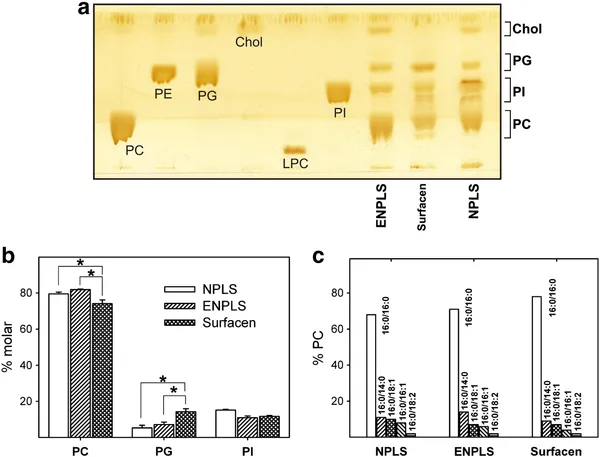Blanco, O., Cruz, A., Ospina, O.L., Lopez-Rodriguez, E., Vázquez, L., Pérez-Gil, J.: BBA-Biochim Biophys Acta. 2012;1818(11):2756-66.
To access the full article, click here:

Surfacen® is a clinical surfactant preparation of porcine origin, partly depleted of cholesterol, which is widely used in Cuba to treat pre-term babies at risk or already suffering neonatal respiratory distress. In the present study we have characterized the interfacial behavior of Surfacen in several in vitro functional models, including spreading and compression–expansion cycling isotherms in surface balances and in a captive bubble surfactometer, in comparison with the functional properties of whole native surfactant purified from porcine lungs and its reconstituted organic extract, the material from which Surfacen is derived. Surfacen exhibited similar properties to native porcine surfactant or its organic extract to efficiently form stable surface active films at the air–liquid interface, able to consistently reach surface tensions below 5 mN/m upon repetitive compression–expansion cycling. Surfacen films, however, showed a substantially larger and stable compression-driven segregation of condensed lipid phases than exhibited by films formed by native surfactant or its organic extract. In spite of structural differences observed at microscopic level, Surfacen membranes showed a similar thermotropic behavior to membranes from native surfactant or its organic extract, characterized by calorimetry or fluorescence spectroscopy of samples doped with the Laurdan probe. On the other hand, analysis by atomic force microscopy of films formed by Surfacen or by the organic extract of native porcine surfactant revealed a similar network of interconnected condensed nanostructures, suggesting that the organization of the films at the submicroscopic level is the essential feature to support the proper stability and mechanical properties permitting the interfacial surfactant films to facilitate the work of breathing.




